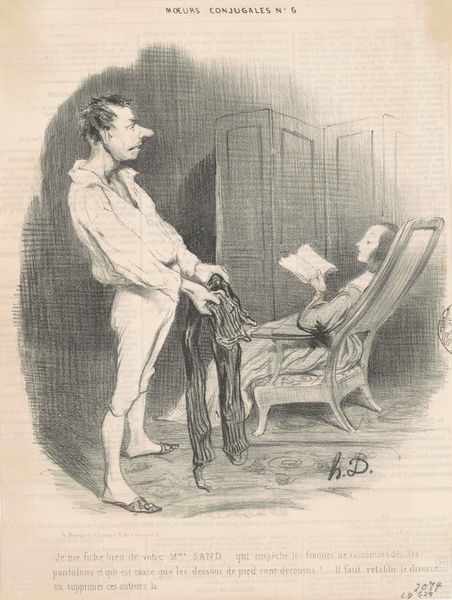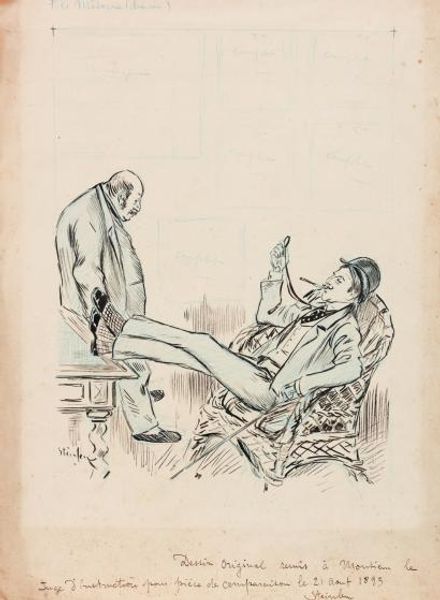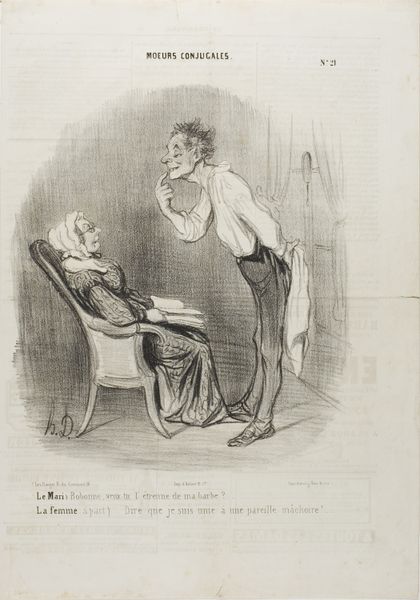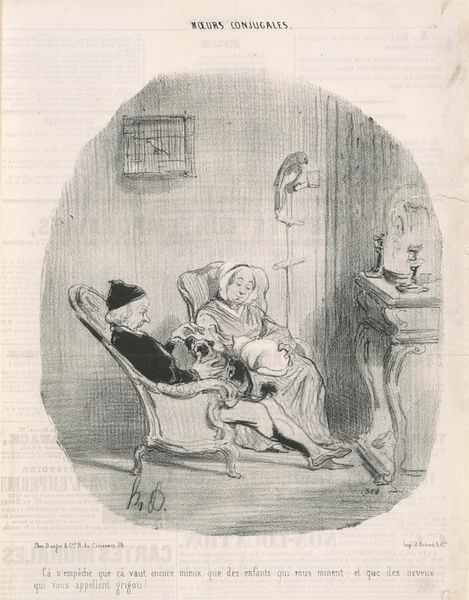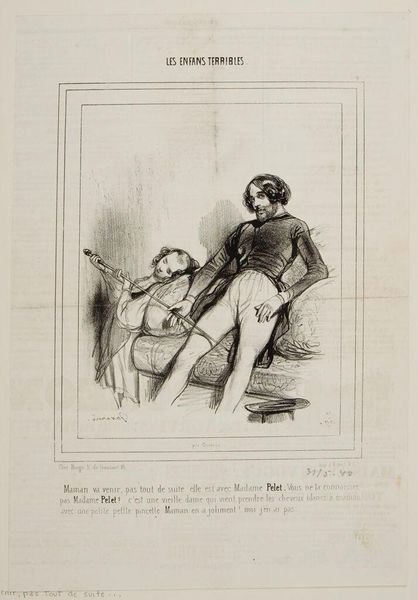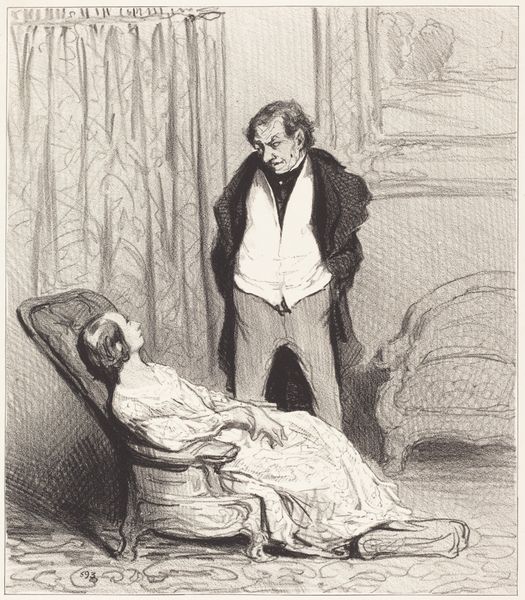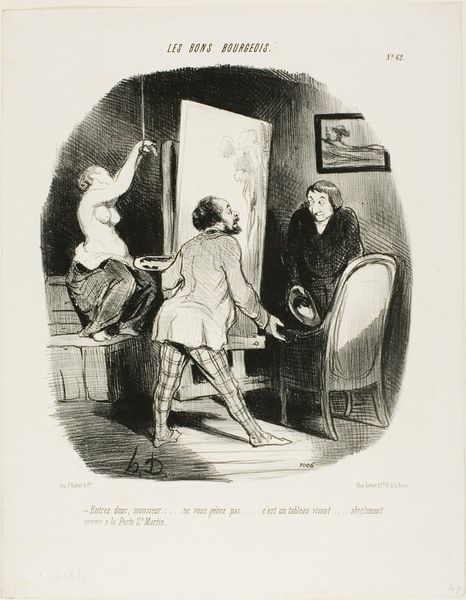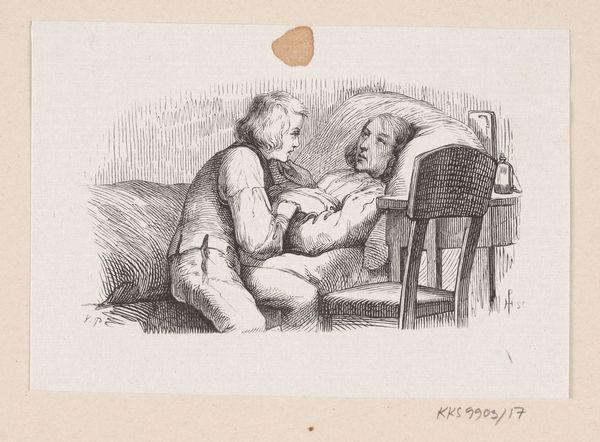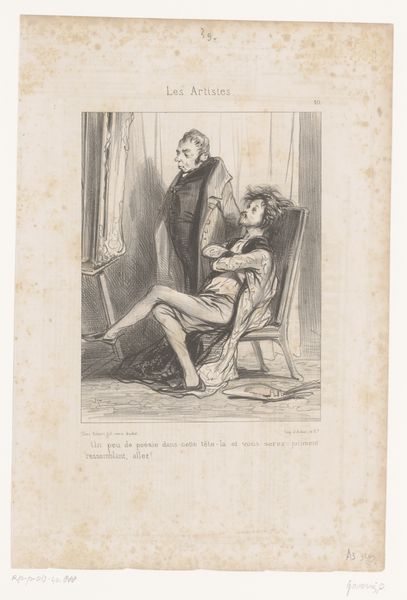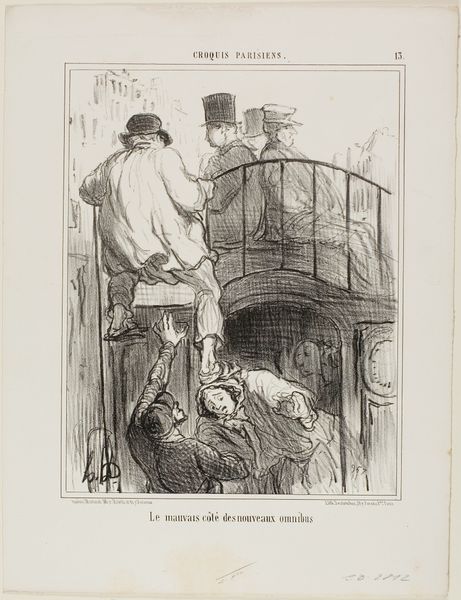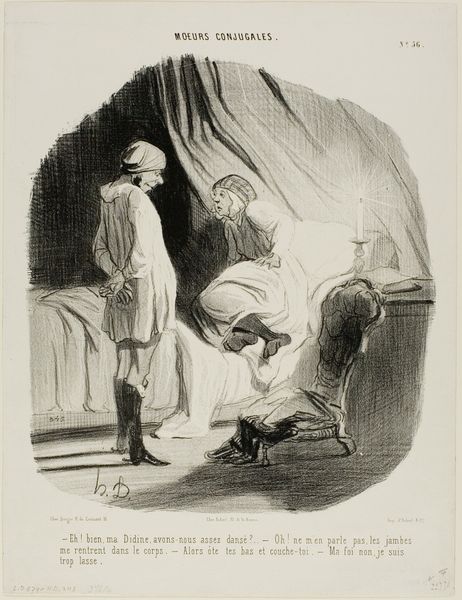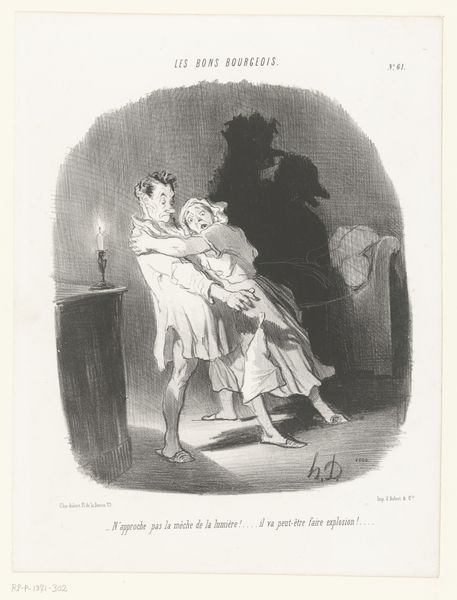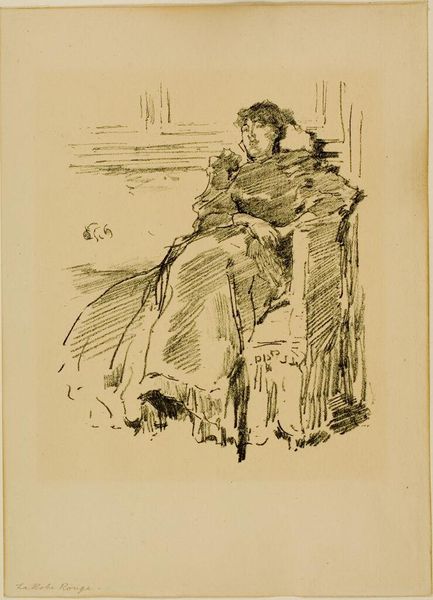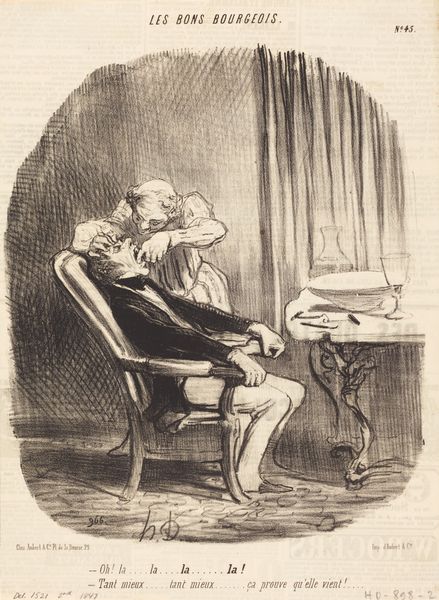
“I don't give a damn about your Miss Sand who prevents women from mending pants and darning socks! ... We must re-establish divorce or suppress those authors!,” plate 6 from Moeurs Conjugales 1839
0:00
0:00
drawing, lithograph, print, paper
#
drawing
#
narrative-art
#
lithograph
# print
#
caricature
#
figuration
#
paper
#
romanticism
#
france
#
genre-painting
Dimensions: 326 × 244.5 mm
Copyright: Public Domain
Curator: This lithograph by Honoré Daumier from 1839 presents a scene charged with societal tensions. What's your initial impression? Editor: Stark! There's a rawness in the lines, an almost violent energy radiating from the man. He’s so rigid, the colors feel restrained but purposeful, highlighting his frustration. The scene has the charge of a courtroom drama about to unfold. Curator: It’s from Daumier's series “Moeurs Conjugales”, or “Conjugal Mores,” and this particular plate is titled "I don't give a damn about your Miss Sand who prevents women from mending pants and darning socks! ... We must re-establish divorce or suppress those authors!". Daumier used caricature to deliver a biting critique of social issues, wouldn't you agree? Editor: Absolutely. Daumier’s style gives the sentiment added power, that urgent message being delivered from the lower classes against the literary salon culture in that time. I see here that George Sand, is being portrayed as a negative icon. Curator: The title pulls no punches, really. What strikes me is the loaded imagery. We see a man holding his trousers, his anger clearly directed at his wife reading in a chair, and indirectly at the author George Sand, champion of women's rights. Note the sharp contrast between them. She, calm and composed, lost in her book and he, agitated and disheveled, concerned about practical matters like mending. Editor: Yes, Daumier weaponizes these symbols of domesticity – mending, reading. This is clearly a statement about the roles that marriage can thrust upon people, where societal progress is a threat to some. You almost sense the man believes if his wife is encouraged to read the wrong things, he will suffer practically as a result! I think this highlights the perception of women's roles within society. Curator: Precisely. This piece acted as a mirror, reflecting the anxieties of the era. By using recognizable symbols and archetypes – the angry husband, the intellectual wife, the "radical" author – he provokes conversation and self-reflection about evolving gender roles. Even today, these ideas echo. Editor: And it really makes you question what cultural memories stick with us from generation to generation! Who knew anxieties around women in the literary field could make such compelling artistic commentary? Curator: Daumier tapped into something truly enduring with his commentaries on marriage and gender roles, presented here for us at the Art Institute of Chicago, offering a sharp and satirical glimpse into 19th-century French society, revealing truths that still resonate today. Editor: I’ll definitely walk away thinking more deeply about the images of George Sand this artwork calls up.
Comments
No comments
Be the first to comment and join the conversation on the ultimate creative platform.
